-
 Bitcoin
Bitcoin $81,455.1592
5.51% -
 Ethereum
Ethereum $1,577.8864
7.50% -
 Tether USDt
Tether USDt $0.9995
0.02% -
 XRP
XRP $2.0084
12.35% -
 BNB
BNB $578.0579
3.99% -
 USDC
USDC $0.9999
0.00% -
 Solana
Solana $113.2360
8.62% -
 Dogecoin
Dogecoin $0.1564
7.25% -
 TRON
TRON $0.2406
5.28% -
 Cardano
Cardano $0.6211
10.88% -
 UNUS SED LEO
UNUS SED LEO $9.4120
2.79% -
 Chainlink
Chainlink $12.3719
10.53% -
 Avalanche
Avalanche $18.2079
12.56% -
 Toncoin
Toncoin $2.9964
0.09% -
 Hedera
Hedera $0.1756
18.45% -
 Stellar
Stellar $0.2346
7.87% -
 Sui
Sui $2.1780
14.32% -
 Shiba Inu
Shiba Inu $0.0...01196
9.43% -
 MANTRA
MANTRA $6.5400
6.48% -
 Bitcoin Cash
Bitcoin Cash $295.0003
8.98% -
 Litecoin
Litecoin $73.8510
4.59% -
 Polkadot
Polkadot $3.5341
4.65% -
 Dai
Dai $1.0000
0.02% -
 Bitget Token
Bitget Token $4.2861
5.97% -
 Ethena USDe
Ethena USDe $0.9987
0.02% -
 Hyperliquid
Hyperliquid $13.7356
12.70% -
 Pi
Pi $0.5960
5.53% -
 Monero
Monero $202.7897
3.63% -
 Uniswap
Uniswap $5.1632
7.98% -
 OKB
OKB $53.2342
3.44%
What is the PoW consensus mechanism and how it works?
PoW secures blockchain networks like Bitcoin by requiring miners to solve complex puzzles, validating transactions and adding blocks, though it consumes significant energy.
Apr 07, 2025 at 03:36 pm
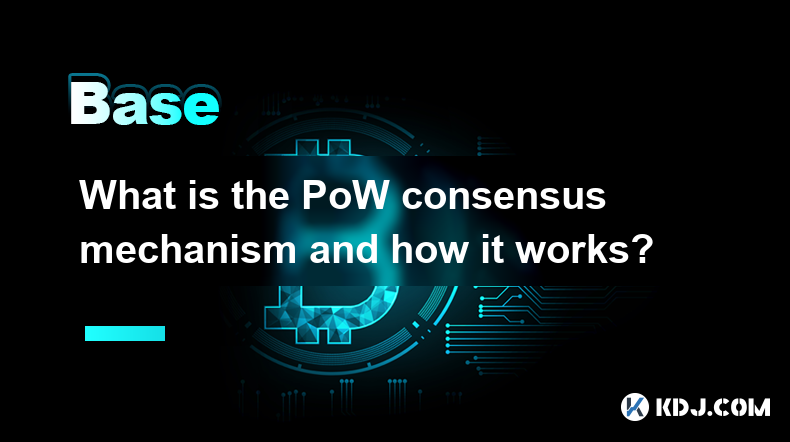
The Proof of Work (PoW) consensus mechanism is a fundamental component of many blockchain networks, most notably Bitcoin. It serves as a method to secure the network and validate transactions in a decentralized manner. In this article, we will explore what PoW is, how it functions, and its significance within the cryptocurrency ecosystem.
What is Proof of Work?
Proof of Work (PoW) is a consensus algorithm used by blockchain networks to achieve distributed consensus. It requires participants, known as miners, to solve complex mathematical puzzles to validate transactions and add them to the blockchain. This process not only secures the network but also ensures that new blocks are added in a fair and decentralized manner.
How Does Proof of Work Work?
The PoW mechanism involves several key steps that miners must follow to validate transactions and add new blocks to the blockchain. Here's a detailed look at the process:
Transaction Verification: Miners collect and verify a set of unconfirmed transactions from the network's memory pool. These transactions are bundled into a block.
Solving the Puzzle: Miners compete to solve a cryptographic puzzle, which involves finding a hash that meets a specific difficulty target. This hash is generated by combining the block's data with a nonce (a random number).
Block Validation: Once a miner finds a valid hash, they broadcast the new block to the network. Other nodes on the network verify the block's validity by checking the hash and the transactions within it.
Adding to the Blockchain: If the block is deemed valid, it is added to the blockchain, and the miner who solved the puzzle is rewarded with newly minted cryptocurrency and transaction fees.
Adjusting Difficulty: The difficulty of the puzzle is adjusted periodically to maintain a consistent block time. If blocks are being added too quickly, the difficulty increases; if too slowly, it decreases.
The Role of Miners in PoW
Miners play a crucial role in the PoW consensus mechanism. They are responsible for maintaining the integrity and security of the blockchain. Here's a closer look at their role:
Securing the Network: By solving complex puzzles, miners prevent malicious actors from easily altering the blockchain. The computational power required to solve these puzzles makes it extremely difficult to tamper with the network.
Validating Transactions: Miners ensure that transactions are legitimate and follow the rules of the network. This includes checking for double-spending and ensuring that the sender has the necessary funds.
Incentivizing Participation: Miners are incentivized to participate through rewards. These rewards come in the form of newly minted cryptocurrency and transaction fees, which encourage miners to continue securing the network.
Energy Consumption and Environmental Impact
One of the most debated aspects of PoW is its energy consumption. The process of solving cryptographic puzzles requires significant computational power, which in turn consumes a large amount of electricity. This has led to concerns about the environmental impact of PoW-based cryptocurrencies.
Energy Usage: The energy consumption of PoW networks, particularly Bitcoin, has been compared to that of small countries. This high energy usage is a result of the competitive nature of mining, where miners use increasingly powerful hardware to solve puzzles faster.
Environmental Concerns: The environmental impact of this energy consumption has led to calls for more sustainable consensus mechanisms. However, proponents of PoW argue that the security it provides is worth the energy cost.
Efforts to Mitigate Impact: Some mining operations are turning to renewable energy sources to reduce their environmental footprint. Additionally, research into more energy-efficient mining hardware continues to progress.
Advantages and Disadvantages of PoW
The PoW consensus mechanism has both advantages and disadvantages, which are important to consider when evaluating its effectiveness.
Advantages:
- Security: PoW provides a high level of security due to the computational power required to alter the blockchain. This makes it extremely difficult for malicious actors to launch successful attacks.
- Decentralization: PoW promotes decentralization by allowing anyone with the necessary hardware to participate in mining. This helps prevent any single entity from controlling the network.
- Fairness: The competitive nature of PoW ensures that miners are rewarded based on their contribution to the network, promoting a fair distribution of rewards.
Disadvantages:
- Energy Consumption: As mentioned earlier, PoW requires significant energy, which can be a major drawback from an environmental perspective.
- Centralization Risks: While PoW aims to be decentralized, the high costs associated with mining can lead to centralization, as only those with substantial resources can afford to participate.
- Scalability Issues: The time and energy required to solve puzzles can limit the scalability of PoW networks, leading to slower transaction processing times.
PoW in Different Cryptocurrencies
While Bitcoin is the most well-known cryptocurrency that uses PoW, it is not the only one. Several other cryptocurrencies also employ this consensus mechanism, each with its own unique characteristics.
Bitcoin: The original and most widely used PoW cryptocurrency, Bitcoin uses the SHA-256 hashing algorithm for its mining process.
Litecoin: Often referred to as the "silver to Bitcoin's gold," Litecoin uses the Scrypt hashing algorithm, which is designed to be more memory-intensive and less susceptible to ASIC mining.
Ethereum (pre-merge): Before transitioning to Proof of Stake (PoS), Ethereum used PoW with the Ethash algorithm. This change was made to address the scalability and energy consumption issues associated with PoW.
Monero: A privacy-focused cryptocurrency, Monero uses the RandomX algorithm, which is designed to be ASIC-resistant and promote more decentralized mining.
Frequently Asked Questions
Q: Can PoW be used in conjunction with other consensus mechanisms?
A: Yes, some blockchain networks use hybrid consensus mechanisms that combine PoW with other methods, such as Proof of Stake (PoS). This can help address some of the drawbacks of PoW while maintaining its security benefits.
Q: How does the difficulty adjustment in PoW work?
A: The difficulty adjustment in PoW is designed to maintain a consistent block time. It is typically adjusted every 2016 blocks in Bitcoin, based on the time it took to mine the previous 2016 blocks. If the time was less than two weeks, the difficulty increases; if more, it decreases.
Q: What is the role of the nonce in PoW?
A: The nonce is a random number used in the mining process to generate different hash values. Miners change the nonce to find a hash that meets the network's difficulty target, allowing them to solve the cryptographic puzzle and add a new block to the blockchain.
Q: How does PoW prevent double-spending?
A: PoW prevents double-spending by ensuring that once a transaction is included in a block and added to the blockchain, it is extremely difficult to alter. Miners verify transactions to ensure that the same coins are not spent twice, and the consensus mechanism ensures that the longest valid chain is accepted by the network.
Disclaimer:info@kdj.com
The information provided is not trading advice. kdj.com does not assume any responsibility for any investments made based on the information provided in this article. Cryptocurrencies are highly volatile and it is highly recommended that you invest with caution after thorough research!
If you believe that the content used on this website infringes your copyright, please contact us immediately (info@kdj.com) and we will delete it promptly.
- GameStop Adds Bitcoin to Its Treasury Reserves
- 2025-04-10 21:35:18
- XRPTurbo ($XRT) is a revolutionary launchpad being built specifically to turbocharge decentralized finance (DeFi) on the XRP blockchain.
- 2025-04-10 21:35:17
- Trump Media Expands into Finance with ETF Collaboration
- 2025-04-10 21:30:19
- Arthur Hayes Predicts Ethereum Will Hit $5k Before Solana Reaches $300
- 2025-04-10 21:30:19
- As we approach the festive season, the value of the crypto coin market begins to gain momentum, and several coins grab the attention of investors.
- 2025-04-10 21:20:13
- Pi Network Faces Significant Hurdles on Its Journey to Listing
- 2025-04-10 21:20:13
Related knowledge
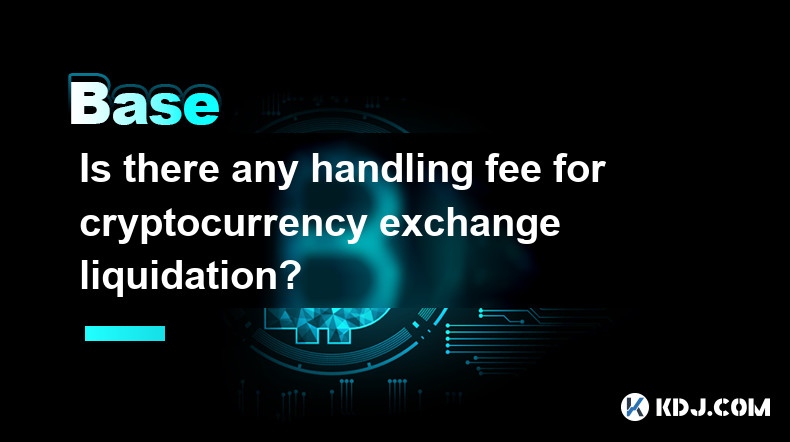
Is there any handling fee for cryptocurrency exchange liquidation?
Apr 10,2025 at 04:29pm
When trading contracts on cryptocurrency exchanges, liquidation is a word that scares investors. A liquidation means that the investor has lost all its principal. So, will the exchange still charge a handling fee when the liquidation is liquidated? This is a concern for many investors. This article will give a detailed answer to this. Important statemen...
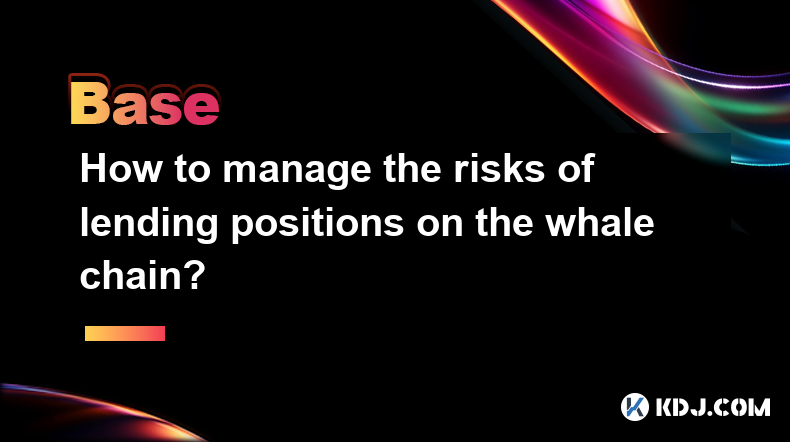
How to manage the risks of lending positions on the whale chain?
Apr 09,2025 at 10:50pm
To manage the risks of lending positions on the whale chain, we need to start from the following aspects: 1. Reasonable control of positions and leverage:Determine the appropriate lending scale and leverage multiple based on your own risk tolerance to avoid excessive leverage. For example, if whales do not have a particularly strong grasp of the market ...
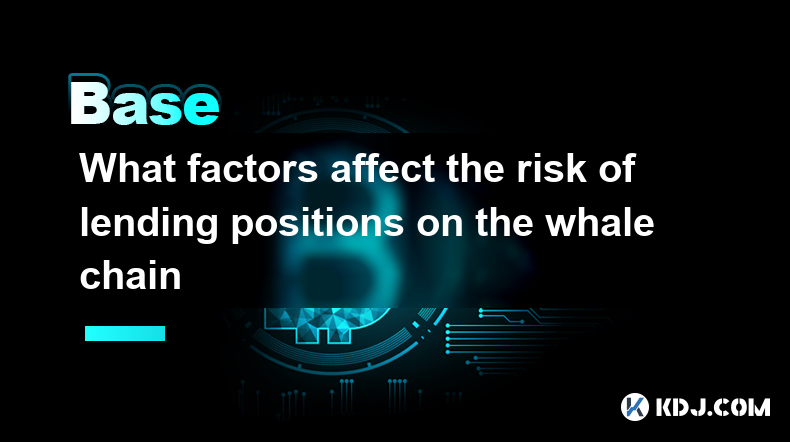
What factors affect the risk of lending positions on the whale chain
Apr 10,2025 at 12:35am
Here are some factors that will affect the risk of lending positions on the whale chain: 1. Market price fluctuations:The decline in collateral prices will cause the collateral value to shrink and may trigger liquidation. For example, a whale borrowed 75.69 million DAI with 60,810 ETH. When the price of ETH falls, its position health will drop sharply a...
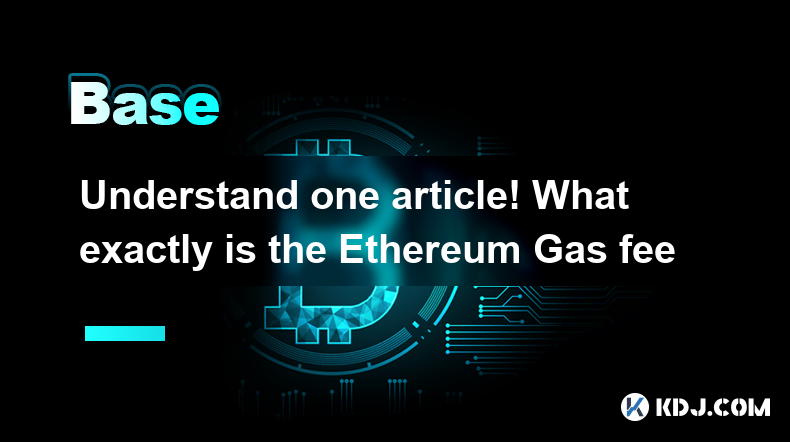
Understand one article! What exactly is the Ethereum Gas fee
Apr 10,2025 at 03:21am
The Ethereum Gas fee refers to the fees paid when trading or executing smart contracts on the Ethereum blockchain, which is used to compensate miners for the computing resources consumed by verifying and packaging exchanges. Here is a detailed introduction to it: Gas concept Gas can be regarded as the “fuel” in the Ethereum network. Ethereum is regarded...
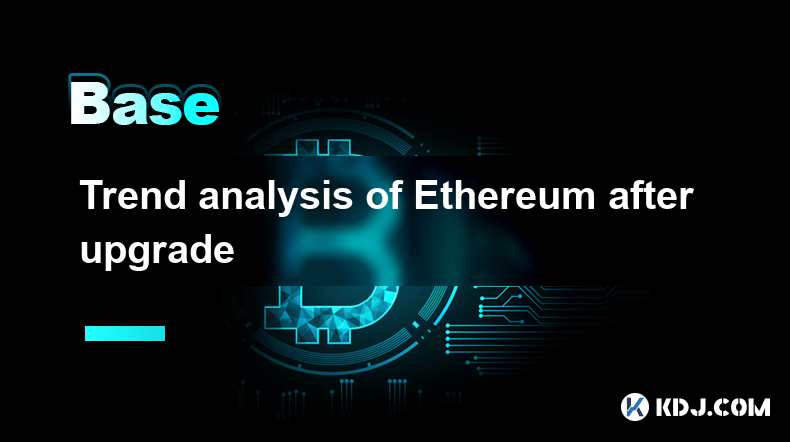
Trend analysis of Ethereum after upgrade
Apr 10,2025 at 04:01am
As a pioneer in blockchain technology, Ethereum has a profound impact on the entire digital asset field every upgrade. Accurately predicting upgraded market trends is crucial for investors and developers. This article will explore in-depth various trends that may appear after the upgrade of Ethereum, helping you grasp the pulse of the market and underst...
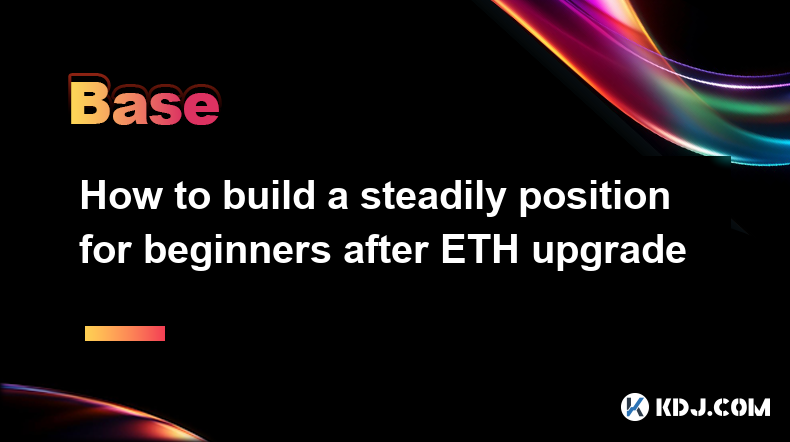
How to build a steadily position for beginners after ETH upgrade
Apr 10,2025 at 04:49pm
The upgrade of Ethereum (ETH) is a grand event in the digital asset field, providing an excellent opportunity for beginner investors. However, the market is volatile and direct investment may face higher risks. This article will provide novices with a stable guide to building positions, helping everyone move forward steadily after ETH upgrade, reduce ri...

Is there any handling fee for cryptocurrency exchange liquidation?
Apr 10,2025 at 04:29pm
When trading contracts on cryptocurrency exchanges, liquidation is a word that scares investors. A liquidation means that the investor has lost all its principal. So, will the exchange still charge a handling fee when the liquidation is liquidated? This is a concern for many investors. This article will give a detailed answer to this. Important statemen...

How to manage the risks of lending positions on the whale chain?
Apr 09,2025 at 10:50pm
To manage the risks of lending positions on the whale chain, we need to start from the following aspects: 1. Reasonable control of positions and leverage:Determine the appropriate lending scale and leverage multiple based on your own risk tolerance to avoid excessive leverage. For example, if whales do not have a particularly strong grasp of the market ...

What factors affect the risk of lending positions on the whale chain
Apr 10,2025 at 12:35am
Here are some factors that will affect the risk of lending positions on the whale chain: 1. Market price fluctuations:The decline in collateral prices will cause the collateral value to shrink and may trigger liquidation. For example, a whale borrowed 75.69 million DAI with 60,810 ETH. When the price of ETH falls, its position health will drop sharply a...

Understand one article! What exactly is the Ethereum Gas fee
Apr 10,2025 at 03:21am
The Ethereum Gas fee refers to the fees paid when trading or executing smart contracts on the Ethereum blockchain, which is used to compensate miners for the computing resources consumed by verifying and packaging exchanges. Here is a detailed introduction to it: Gas concept Gas can be regarded as the “fuel” in the Ethereum network. Ethereum is regarded...

Trend analysis of Ethereum after upgrade
Apr 10,2025 at 04:01am
As a pioneer in blockchain technology, Ethereum has a profound impact on the entire digital asset field every upgrade. Accurately predicting upgraded market trends is crucial for investors and developers. This article will explore in-depth various trends that may appear after the upgrade of Ethereum, helping you grasp the pulse of the market and underst...

How to build a steadily position for beginners after ETH upgrade
Apr 10,2025 at 04:49pm
The upgrade of Ethereum (ETH) is a grand event in the digital asset field, providing an excellent opportunity for beginner investors. However, the market is volatile and direct investment may face higher risks. This article will provide novices with a stable guide to building positions, helping everyone move forward steadily after ETH upgrade, reduce ri...
See all articles





















































































